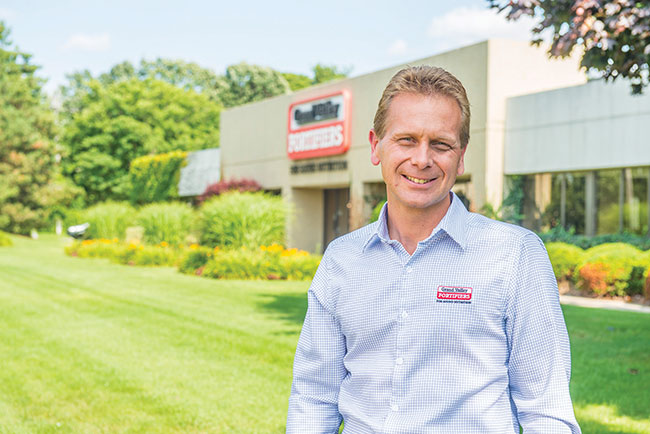
LRIC Update: Livestock, climate and sustainability
Monica Dick
Features Emerging TrendsClaims that eliminating animal agriculture is key to addressing climate change ignore the critical role the sector plays.
 Ian Ross, CEO of Grand Valley Fortifiers.
Photo: Grand Valley Fortifiers
Ian Ross, CEO of Grand Valley Fortifiers.
Photo: Grand Valley Fortifiers There’s a growing narrative that eliminating animal agriculture is the key solution to the world’s climate change problem – much to the frustration of the livestock industry.
According to Ian Ross, president and CEO of Grand Valley Fortifiers (GVF), this ignores the critical role that livestock plays in global food protein security, regenerative agriculture, and carbon sequestration.
What’s needed, he believes, is for the sector to be a more active participant in the climate change discussion, promoting the science and industry realities that show it’s economic and food security importance as well as the environmental efficiency of meat, milk and eggs when measured on a human digestible protein basis.
This includes greater understanding of how much human food and energy by-products livestock consume in developed nations and the positive effects pasturing and manure have on soil health and carbon sequestration.
Sustainability targets
This matters because food companies, for example, are setting their own sustainability targets, including for emissions that come from the entire value chain, and will be looking to their suppliers to help meet those targets.
According to Ross, suppliers – and this includes farms – who can’t comply will likely see their domestic and international market opportunities shrink and may also face limited financing and investment capacity in the future.
“We’re seeing governments, banks, and large food companies who have full-time staff dealing with sustainability issues, driving adoption of environment, social and governance (ESG) plans and over time, this will cascade down to small and medium size business,” Ross says. “So how do farms, who don’t have those kinds of resources, navigate in this environment? How can we help position famers better for a more sustainable future?”
Biggest impact from feed
With feed production accounting for 55 to 75 per cent of greenhouse gas (GHG) emissions from meat, milk and egg production as well as representing a significant proportion of a farm’s cost of production, the biggest impact could come from better feed conversion, Ross notes. Better feed efficiency also means lower feed costs and improved business profitability.
In other words, it can pay to pay attention to sustainability – and GVF is focusing its corporate efforts on making it easier for producers to do just that.
That includes taking a very close look at feed formulation, like embracing ingredients that support reducing methane emissions, searching for different protein sources, and including GHG emissions metrics in its feed formulation software to calculate the emissions per tonne of complete feed.
“Part of this process for us is metricizing everything. If we track feed conversion along side growth, we can see quite clearly what the best feed program is for particular genetics at a particular stage of life,” Ross says.
Gathering proof points
To help gather that data, GVF has deployed internet-enabled scales on over hog 60 farms to track average daily gain in real-time. This type of on-farm technology will also provide proof points for something the industry is very proud of – Canadian livestock farmers are already among the most efficient producers in the world.
GVF is also piloting two existing environmental models from the Netherlands and the UK on 12 Ontario poultry, swine, dairy and beef farms. The goal is to evaluate how well they work at the farm level, and what results they provide before potentially making them available to farmers.
“If companies like ours don’t try to figure this out and help our customers understand what’s coming at them, I’m concerned that they may not have as many markets available to them down the road – but in the immediate, we know that focusing on sustainability, which is really about efficiency, can also have a positive impact on farm profitability,” believes Ross.
This article is provided by Livestock Research Innovation Corporation as part of LRIC’s ongoing efforts to report on research, innovation, and issues affecting the Canadian livestock industry.
Livestock Research Innovation Corporation (LRIC) fosters research collaboration and drives innovation in the livestock and poultry industry. Visit www.livestockresearch.ca or follow @LivestockInnov.
Print this page